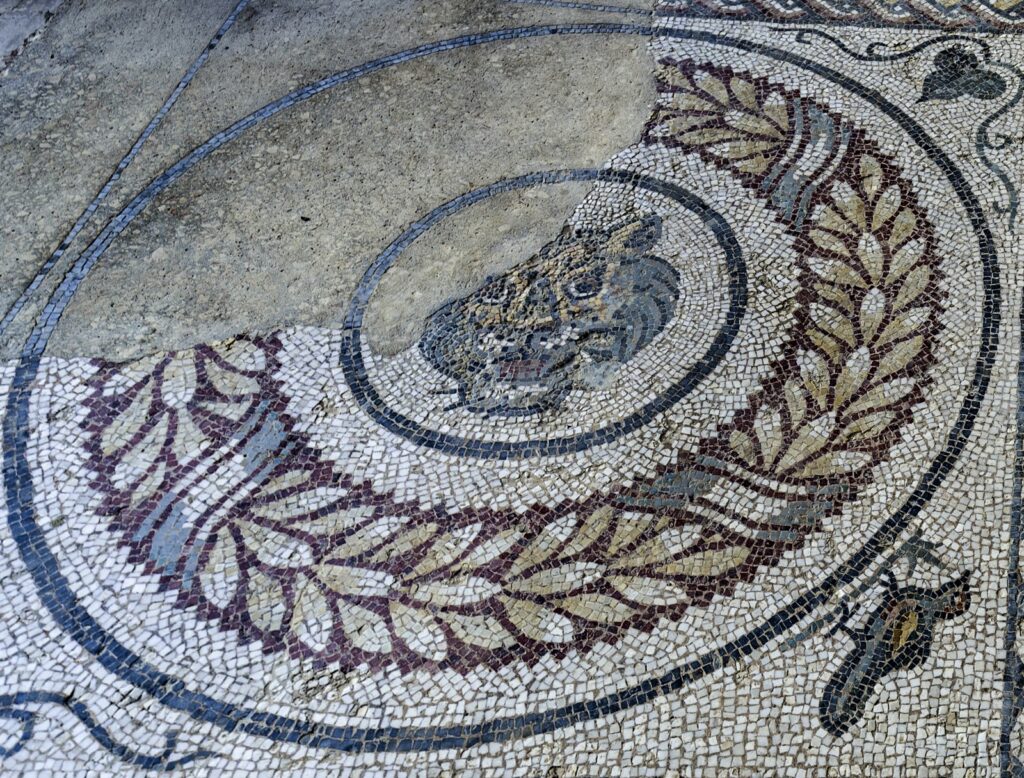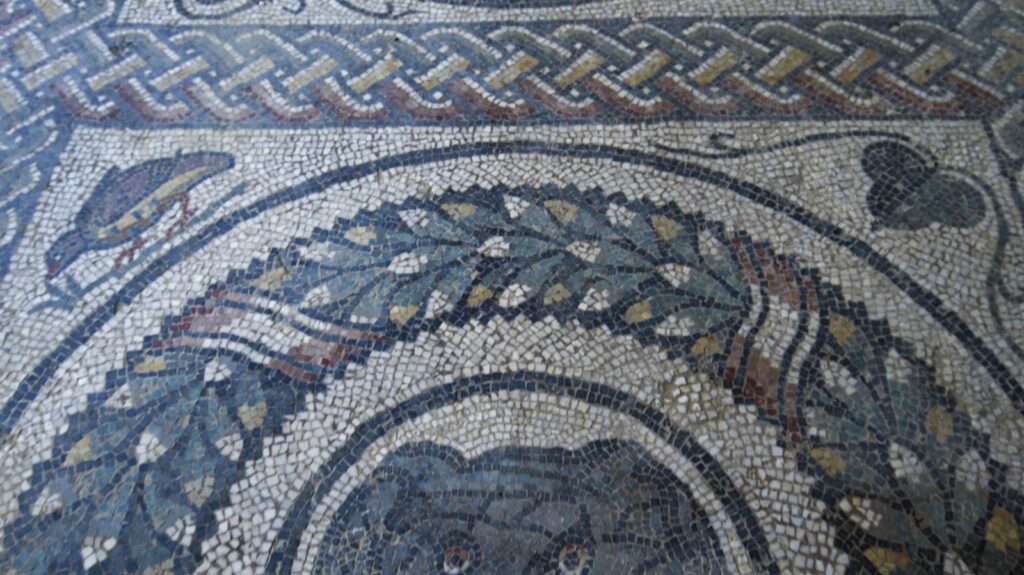The search for clues continues by observing, in the floor decoration of the peristyle, the ends of the panels containing the laurel wreaths with animal heads.  The repeated presence of an ivy leaf and a bird suggests a hidden meaning; in the Roman world artistic compositions often became a treasure chest of secrets that had to be interpreted.
The repeated presence of an ivy leaf and a bird suggests a hidden meaning; in the Roman world artistic compositions often became a treasure chest of secrets that had to be interpreted. According to the hypothesis of one scholar, the composition conceals an acrostic, in this case a succession of initials referring to the names of the subjects represented, which had a further meaning: the Latin word AVIS (BIRD), the shape of the shoots of the ivy leaf, similar to an M and the letter H, the beginning of the word HEDERA (IVY), related to the decorated leaf in the mosaic, seem to indicate the title AURELIUS VALERIUS IMPERATOR SUFFECTUS MAXIMIANUS HERCULIUS.
According to the hypothesis of one scholar, the composition conceals an acrostic, in this case a succession of initials referring to the names of the subjects represented, which had a further meaning: the Latin word AVIS (BIRD), the shape of the shoots of the ivy leaf, similar to an M and the letter H, the beginning of the word HEDERA (IVY), related to the decorated leaf in the mosaic, seem to indicate the title AURELIUS VALERIUS IMPERATOR SUFFECTUS MAXIMIANUS HERCULIUS.
By analysing the acrostic, we find: Aurelius Valerius, followed in the proper name of
Maximian
by the first name Marcus, and probably added in 285 AD, the year when Maximian was named caesar by
Diocletian
, to strengthen the connection with the emperor.
Suffectus in the sense of substitute. Usually suffectus is paired with consul in the not-so-rare case of the appointment of another consul in the event of death or removal of one of the two in office.
The last word, Herculius, is the nickname that Maximian assumed in 286 at the time of his election to augustus, co-regent of the Empire with Diocletian who chose for himself the nickname Jovius, descendant of Jupiter.
The legitimacy of the power of both therefore had a divine approval linked to lineage, but Maximian, though an equal to Diocletian as augustus and therefore collaborator, was, at the same time, subordinate to him: as the myth reminds us, Hercules was the son of Jupiter.